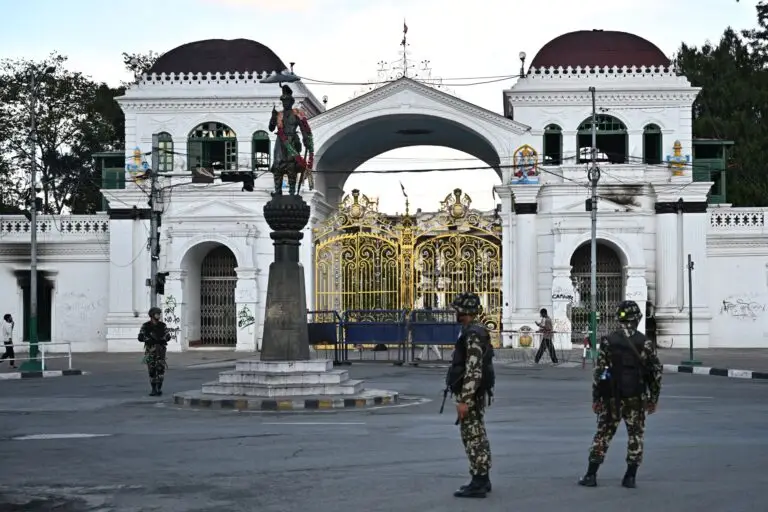Kathmandu — Nepal has been thrust into its gravest turmoil in decades as a sweeping wave of youth-driven protests toppled Prime Minister K.P. Sharma Oli, left parliament in ruins, and plunged the Himalayan nation into political limbo.
The unrest, ignited by anger over a government ban on social media and longstanding corruption scandals, escalated into days of nationwide revolt. Streets once crowded with daily commerce are now patrolled by soldiers enforcing curfews, their armored presence a stark reminder of the collapse of civilian order.
A Generation’s Revolt
At the heart of the movement is a loose coalition of young activists—self-identifying as “Gen Z”—who reject the country’s entrenched political elite. What began as rallies in Kathmandu morphed into sweeping acts of defiance: fires engulfed government offices, luxury hotels, and even the former prime minister’s residence.
Their demands are direct. “Dissolve parliament. End the cycle of recycled leaders,” declared Sudan Gurung, a prominent organizer. Unlike previous uprisings in Nepal’s turbulent history, the protesters insist they are not fighting for power themselves, but for systemic reform.
State in Crisis
The scale of the upheaval is staggering. Nearly 13,500 inmates broke free during the chaos, overwhelming security forces who have recaptured only a fraction. The political class, meanwhile, has all but vanished—many senior figures either in hiding or stripped of influence.
President Ramchandra Paudel, whose own office was torched, has appealed for calm while attempting to assemble a constitutional pathway forward. “Every effort is being made,” he said, urging the country to trust in an eventual resolution.
Who Leads Next?
Attention has shifted to possible interim leadership. Former Chief Justice Sushila Karki, 73, has emerged as a frontrunner, with some youth leaders and Kathmandu Mayor Balendra Shah endorsing her as a stabilizing figure to guide the nation toward fresh elections. Yet, divisions remain, reflecting the decentralized and unpredictable nature of the movement itself.
A Fragile Future
Behind the chaos lies a deeper fracture—one rooted in economic stagnation. Nepal’s youth face some of the highest unemployment rates in South Asia, with limited prospects fueling resentment. The uprising is as much about economic despair as it is about political dysfunction.
Whether this movement results in reform or simply another cycle of instability will depend on the ability of an interim government to channel the demands of a restless generation into concrete change. For now, Nepal stands suspended—its streets quieter under curfew, its institutions smoldering, and its future uncertain.

